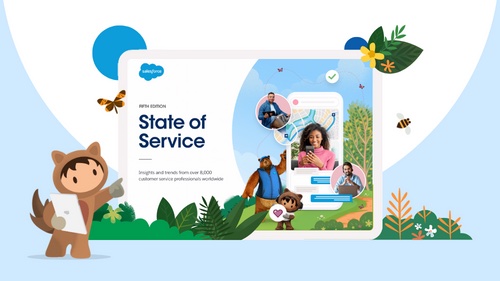
Get your FREE 30-day trial.
Start by selecting a product:
It’s that time of year again: resolutions are made, new leaves are turned and over-indulgences followed by short-lived gym memberships!
We seem to follow quite a common personal routine, but I’ve noticed that for businesses in Australia things don’t really get going until late January. The culmination of the festive season and school holidays combine for the perfect break from work. But, it can also be taken as a super-sized opportunity to reflect on business goals.
Be honest - how well do you review how your business is performing?
For Salesforce users, the ease with which you can review business and operational goals from reports and dashboards allows a thorough introspection of how the business is doing. The ability to dive into a granular level of facts makes it easy to focus on which business units need support or where changes can be made. Despite this simplicity, how many of us actually do this? The answer is: not enough. But, why not make this type of activity your New Year’s resolution?
Resolve to be more strategic
Businesses require a more strategic outlook from A to Z, as opposed to the standard, day-to-day tactical measures most often used to steer businesses from A to B to C. The latter measures are much like that short-lived gym membership -- a good idea at the time that becomes neglected and not well visited unless something goes wrong.
So why aren’t more businesses taking a brand new year as an opportunity to strategise? If you’re not a Salesforce user, then perhaps the ability to create that level of granularity in your reports and roll these up into meaningful and trusted measures of business success is too hard? If you are a Salesforce user and are still not doing this, then how can you be sure you're measuring the right things?
Deciding on what to measure
Through my career in business process management, I’ve found that the majority of businesses simply do not measure what matters in order to deliver value to their customers.
Rather than measuring customer-facing activities, the majority of businesses still measure operational, inward facing aspects with a smattering of feedback surveys. For example, instead of measuring wait time for customers who reach the call centre, many businesses measure how many touch points were required to resolve a customer query.
The good news is that today’s advanced CRM capabilities provide businesses with measures that matter. But that type of success doesn’t just happen on its own. To truly realise those benefits, you need to recognise that you’re not done after the initial implementation.
To get the most out of your technology investment, I believe we need to radically change how we think about doing business. We need to be more customer-focused and really walk in the customers shoes.
Think like a customer
In order to do this, we need to change what we measure so that we can better appreciate the customer’s point of view. Salesforce was created to enable exactly this customer-centric way of thinking. Even so, while the tools are out there, using them to our benefit still requires a shift in thinking from the traditional, inward machine view to a customer experience point of view. This type of shift isn’t easy, but if it’s done well it will lead to happier customers and happier employees.
So, are you ready to make a new resolution for your business this year?
Ready to make 2015 the year of transformative customer service? Watch a demo or download our free e-book to learn how Salesforce can help.